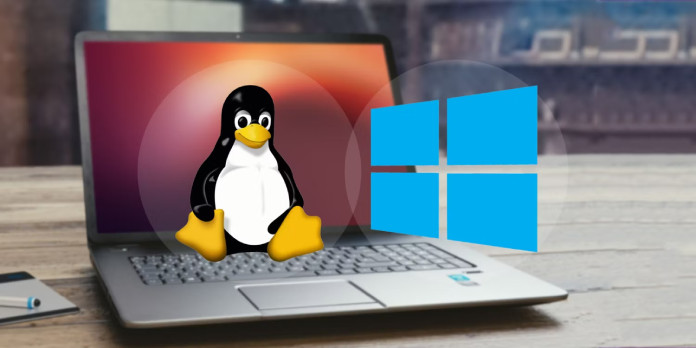Here we can see, “How to Dual Boot Windows 11 and Linux”
- Learn everything there is to know about how Secure Boot interferes with dual-booting Linux and Windows 11.
- Create a separate partition, then install the new operating system on it for the operation to work.
- If Linux is absent, keep in mind that Windows may replace the Linux bootloader, however there is a simple remedy that may be used.
Linux is one of Windows’ main rivals, and now that Windows 11 is in the spotlight, the fight is more intense than ever.
Both operating systems have benefits and drawbacks, and if you want to learn more, we advise reading our tutorial comparing Windows 11 and Linux in depth.
You are not required to choose between the two, though. Instead, we’ll demonstrate today how to dual boot Windows 11 and Linux on your computer with a little work.
Does Secure Boot interfere with Linux dual boot?
Let us explain how this may impact Linux systems and dual booting, as the Secure Boot feature is one of Windows 11’s criteria along with the TPM.
In order to safeguard your PC from malware, Secure Boot technology only permits authorized boot loaders to initiate the boot process.
Many people were concerned that Linux might not function in dual boot mode with Windows 11 because many versions of Linux are incompatible with Secure Boot, which is a prerequisite for Windows 11.
Yes, Linux will be able to run alongside Windows 11 for a long time, but you’ll need to choose a version of Linux that supports Secure Boot, like Ubuntu or Fedora, or turn off Secure Boot in the BIOS.
As you can see, Secure Boot is required for Windows 11, but you don’t have to have this setting active at all; thus you may use dual boot Linux without any problems.
How can I dual boot Windows 11 and Linux?
First, take note that there are two methods for dual-booting. First, if Windows 11 is already installed on your computer, you may simply install Linux by following the instructions below.
Install Linux from Windows 11
1. Create a new partition for Linux
-
- In the list that appears, press WindowsKey + X and choose Disk Management.
- The drive with extra space should be chosen. Depending on your usage and the requirements of the various Linux versions, you’ll want 50–100GB+ of space.
- Select Shrink Volume from the menu by performing a right-click on that drive.
- Click the Shrink button after entering the appropriate amount of space in MB in the Enter the amount of space to shrink in the MB section.
- Unallocated space will result from this. New Simple Volume can be chosen by right-clicking the Unallocated space.
- Click Next after increasing the Simple volume size in MB to its highest amount.
- Now, you have to type the letter you want for this drive’s label.
- In order to finish the procedure, click the Finish button.
Finally, you need to download Linux and make a bootable flash drive to install it in order to have a fresh partition made.
2. Download Windows ISO and create a bootable flash drive
-
- Visit the distribution’s download page if you wish to download it. Although we used Linux Mint in our example, you can use any other distribution you choose.
- Choose the desired source, then hold off until the download is complete.
- Sync a USB flash drive with your computer.
- Once the ISO file has been downloaded, launch Rufus.
- From the list of available devices, pick your flash drive.
- Select the downloaded ISO file by clicking Select.
- Click Start after making sure all of your settings are accurate.
- You will get a confirmation popup asking you to format the drive before continuing.
- Await the procedure’s conclusion.
Once it’s done, you’ll have a bootable Linux flash drive available. We can now proceed to install Linux.
3. Change the boot order and install Linux
-
- Press Del to enter BIOS after restarting your computer. Check the documentation for your PC and/or motherboard because some motherboards use a different key.
- Set your flash drive as the default boot device in the Boot area, then save the settings.
- You’ll boot into a live session of Linux Mint after your computer restarts. Select Linux Mint Install.
- After choosing your preferred language, click Continue.
- Choose your network next if you want to download third-party software for your graphics card, Wi-Fi, and media devices.
- Choose Continue after selecting Something Else.
- The partition that was generated at the start of this section is now available for selection. You must choose the right partition or risk formatting the wrong drive and losing your data.
- You must edit the partition and set it to Ext4 because Linux does not support Windows file types. Remember that the partition will be formatted throughout this operation, and all of its files will be deleted.
- You can proceed to install Linux on the device after it has been changed to Ext4 format.
- Choose a time zone.
- Choose your preferred keyboard layout.
- Now enter your login details. You can choose not to have your home folder encrypted.
- Hold off until the installation is complete.
- Click the Restart now button when the installation is complete.
- Optional: Reopen BIOS and choose your hard drive as the default boot device.
- You’ll be prompted to select between Windows 11 and Linux when your computer boots; simply select your preference, and you’re done.
These procedures should be followed for dual-booting Windows 11 and Linux to function as intended. Every time your PC boots, you must choose the desired operating system.
In our example, we utilized Linux Mint, but the procedures are essentially the same for all Linux distributions.
Install Windows 11 from Linux
1. Create a new partition for Windows
-
- Open GParted or any disk management program you might use on your Linux computer.
- Optional: Run the following command in the Terminal to install GParted:
sudo apt install gparted
- The partition that has to be shrunk can be found here. Remember that while running Linux, you cannot resize the partition on which Linux is installed. To achieve that, you must boot from a Linux Live USB and then carry out these actions.
- Unmount can be chosen by right-clicking the partition you want to reduce.
- Simply perform a second right-click on the partition and select Resize/Move from the menu.
- At least 50000 should be entered as the new size, but if you plan to install more programs, we advise using a greater value. When you’re finished, select Resize/Move.
- To make the changes, now click the Apply icon in the toolbar.
- Right-click the newly formed empty slot and select New.
- Choose NTFS as the file system, then click Add.
- To save the changes, press the Apply button.
- Locate the partition you demounted in Step 4 and select Mount from the context menu.
We need to download Windows and make a bootable USB flash drive now that we have our Windows partition prepared.
2. Download Windows and create a bootable flash drive
-
- On your Linux computer, visit the Microsoft download website.
- Click on Confirm after choosing the Windows version you want to download.
- Click the Confirm button after selecting your preferred language.
- Choose the version you like; however to prevent compatibility difficulties, we advise selecting the 64-bit version.
- Select a save place, then begin the download.
- Await the procedure’s conclusion.
3. Create a bootable USB flash drive
-
- Connect your PC to the USB flash drive. The minimum size for the drive should be 8GB, but 16GB is preferred.
- Launch GParted or any other available disk management program.
- In the top right corner, click your USB flash drive in the drop-down menu. Your drive should have the name /dev/sdb or a similar one. Make sure you choose the right drive.
- Verify whether a key icon appears next to any partitions. If so, select Unmount when you right-click those partitions.
- Now select Format from the context menu when you right-click the partition on your flash device.
- A new partition should utilize all available capacity on your flash drive.
- Click Apply after selecting ntfs or exfat as the file system.
- To save the changes, click the Apply button on the toolbar right now.
4. Mount Windows 10 ISO and create installation media
-
- Check to see if your USB flash drive is plugged in.
- Find the ISO file for Windows 10 that you downloaded.
- Select Disk Image Mounter from the Open With menu when you right-click it.
- Choose all files from the mounted ISO file after finding it. Select Copy now.
- Paste the files there after navigating to your USB flash drive.
The following Terminal commands can be used to mount the drive if the context menu option is not available:
sudo mkdir /mnt/windows10/
sudo mount -t auto -o loop /path/to/window-10-iso /mnt/windows10/
Your bootable flash drive is now ready for usage after the files have been copied, so let’s install Windows 10 now.
5. Install Windows 10
-
- The BIOS of your computer. Typically, you can accomplish this by pressing a certain key as the system boots. Delbut depending on your motherboard, things can change.
- Set your USB flash drive as the initial boot device by going to the Boot section.
- Disable Secure Boot by going to the Security section. To enable you to accomplish that as well, some users advise disabling the Compatibility Support Module.
- Restart your computer after saving modifications.
- Press any key to boot from your flash drive when your computer restarts.
- After selecting your preferred language, click Next.
- Choose the Windows 10 version you want to install.
- Don’t forget to consent to the terms of service.
- Select Custom: Install just Windows (advanced).
- Choose the partition where Windows 10 should be installed. Selecting the partition you created for Windows 10 is crucial. Choose Next.
- Hold off until the installation is complete.
6. Join the Windows Insiders Program and download Windows 11
-
- Start Windows 10
- Select Update & Security in the Settings app after opening it.
- Click the Get Started button after selecting the Windows Insider Program.
- Select your Microsoft account by clicking on Link an Account.
- Make sure you choose Beta or Dev Channel. Beta Channel is more stable, while Dev Channel receives more frequent upgrades. Afterward, select Confirm.
- Click Confirm in the privacy statement window.
- Select Restart Now.
- Open the Settings app after your computer has restarted. Then, click the Check for updates button in the Update & Security section.
- Update for Windows 11 is downloading.
- To install it after the download is complete, restart your computer.
If you follow these instructions, Windows 11 and Linux should be running on your computer.
Why is Linux missing after installing Windows in dual boot mode?
There is a way to fix this, though:
-
- While the system is booting, press the boot menu key. Normally, it is F12; however your motherboard may modify this. To boot to Ubuntu, choose it now. Use Linux Live USB if the previous approach fails.
- Make a Live USB for Linux.
- Launch Linux Live USB first.
- Ensure that you have an Internet connection.
- Run the following commands after opening the Terminal:
-
sudo add-apt-repository ppa:yannubuntu/boot-repair sudo apt-get update sudo apt-get install -y boot-repair && boot-repair
-
- Open Boot-Repair now by typing boot-repair into the Terminal or looking for it in the list of installed programs.
- Select Recommended repair to attempt to resolve the issue.
According to some users, you can also resolve this issue using the following method:
-
- Start Linux from a Live USB or boot into it.
- Run the following command in Terminal once it is open:
-
sudo update-grub2
-
- Await the conclusion of the command.
- Once you’ve done that, go into BIOS and select Linux as the primary boot drive.
- Save changes.
These instructions are designed for Ubuntu distributions; if you’re using another Linux distribution, you might need to use different techniques to fix the bootloader.
Should I install Linux or Windows 11 first when dual booting?
Installing Windows first, then making a new partition for Linux, is typically a better strategy if you wish to dual boot Windows and Linux.
The largest challenge is the bootloader, although it’s far simpler to make a Linux bootable disc with the required partitions from Windows.
You will overwrite your bootloader if you install Windows after Linux, and you won’t be able to boot into Linux until you fix the bootloader.
Conclusion
I hope you found this guide useful. If you’ve got any questions or comments, don’t hesitate to use the shape below.
User Questions
1. With Windows 11, is dual booting possible?
The Secure Boot technology is included with the TPM 2.0, as per the prerequisites and specifications for Windows 11. You have two options for a seamless dual boot between Windows 11 and Linux. Use a suitable Linux distribution or disable Secure Boot in the Windows 11 BIOS.
2. Can Linux be installed alongside Windows 11?
Microsoft is streamlining the installation of the Windows Subsystem for Linux 2 (WSL) on Windows 11 by reducing it to a single command that downloads and installs all necessary parts, including the virtual machine platform and Linux GUI applications. Additionally, the script, by default installs the most recent Ubuntu distribution.
3. Can virtual machines be run on Windows 11?
In Windows 11, the Hyper-V Manager will do the process of creating a virtual computer. You can utilize this built-in tool without the need for additional programs like VirtualBox, but you’ll need Windows 11 Pro to do so. In addition, you must upgrade your Windows 11 version if you use Windows 11 Home.
4. Should I dual boot windows 11 and linux? – Reddit
5. Dual Boot with Windows 11 : r/linuxquestions – Reddit



